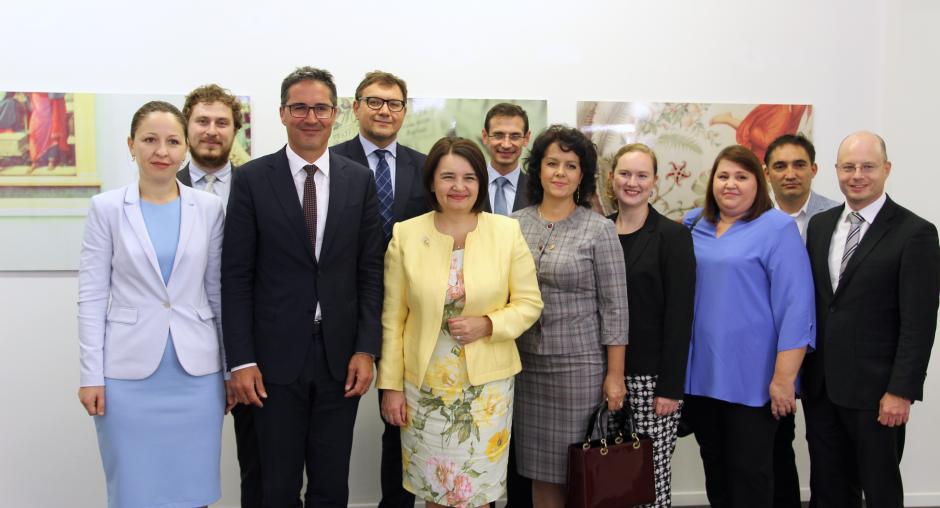Multilingual education the focus of OSCE-organized study visit of Moldovan state and civil society representatives to Alto Adige/South Tyrol

CHISINAU / BOLZANO, Italy, 26 September 2018 - Best practices for developing and implementing bilingual and multilingual education programmes and curricula were the focus of a three-day study visit by a group of representatives from Moldova’s state and civil society institutions to the Autonomous Province of Alto Adige/South Tyrol in northern Italy, which concluded today. The visit was organized by the OSCE Mission to Moldova and the Office of the OSCE High Commissioner on National Minorities (HCNM) with the support of the Italian Ministry of Foreign Affairs and the Italian Embassy in Moldova.
The study group, led by Moldova’s Minister of Education, Culture and Research, Monica Babuc, included representatives from the Executive Committee of the Autonomous Territorial Unit (ATU) of Gagauzia, Taraclia District Council, as well as the National Association of European Trainers in Moldova (ANTEM).
In meetings with senior officials of the Provincial Government of Alto Adige/South Tyrol and local minority rights and linguistic experts, the Moldovan delegation learned about Alto Adige/South Tyrol’s successes in developing and implementing multilingual education programmes and language testing criteria. The province is home to three language communities –Italian, German and Ladin, a minority community with a language spoken by five percent of the population. While Italian and German can both be used for official purposes, all three languages of instruction are used in the education system of Ladin-speaking communities.
Upon the conclusion of the visit, the Head of the OSCE Mission to Moldova, Claus Neukirch, expressed his hope that the experiences gained during the trip will translate into policies that promote multilingual education and send a strong signal for a truly inclusive Moldovan society. “Effective multilingual education contributes to making diversity a tangible strength,” he said.
"Although the national linguistic legislation is permissive enough, there are still challenges in promoting state and minority languages in the education system. I hope very much that Alto Adige/South Tyrol 's experience will help us overcome these challenges and take relevant examples to promote multilingualism and sustainable language policies at national level," said Minister Babuc.
"We look towards Alto Adige/South Tyrol's economic development and language policies as we promote the Gagauz language and build our knowledge of the state language for our own development," said Deputy Chairperson of ATU Gagauzia Olesea Tanasoglo.
Since 2017, the OSCE Mission to Moldova and HCNM are supporting the Government of Moldova in implementing an action plan for the National Strategy on the Consolidation of Interethnic Relations, elaborated with the support from HCNM. The action plan foresees the development of state policies on national minorities’ access to teaching of the state language and to education in minority languages. Under the direction of the Ministry of Education, Culture and Research, these language-related policies will benefit minority groups in Moldova, including those of the ATU Gagauzia and Taraclia. According to the 1994 law On the Special Legal Status of Gagauzia, the state language, Gagauz and Russian are the official languages of the autonomy. However, multilingual education institutions in Gagauzia are few.
In recent years, the HCNM has been facilitating bilingual education in state language and Gagauz at pre-school institutions in Gagauzia through ANTEM, and has funded programmes for teaching civil servants the state language nationwide. This year, the OSCE is supporting the Government’s efforts to take over the responsibility of promoting bilingual education through implementing the action plan.
The study trip is a follow-up to last year’s visit to the Autonomous Province of Alto Adige/South Tyrol, during which representatives from the Executive Committee of Gagauzia and the People’s Assembly of Gagauzia gained an insight into the province’s competencies and its methods of communicating with the central authorities.
